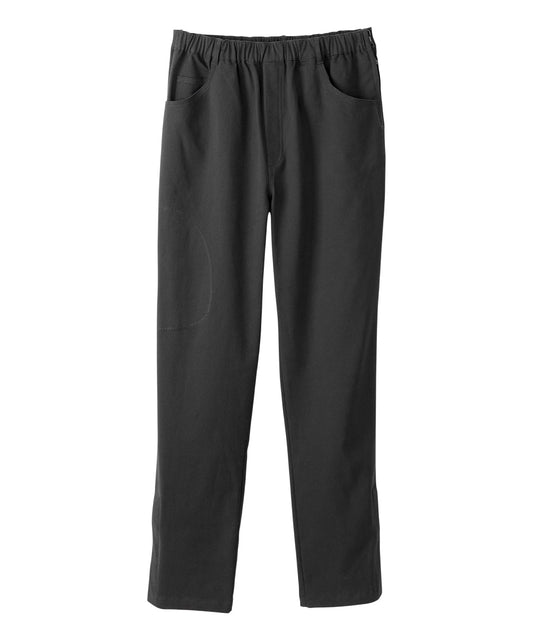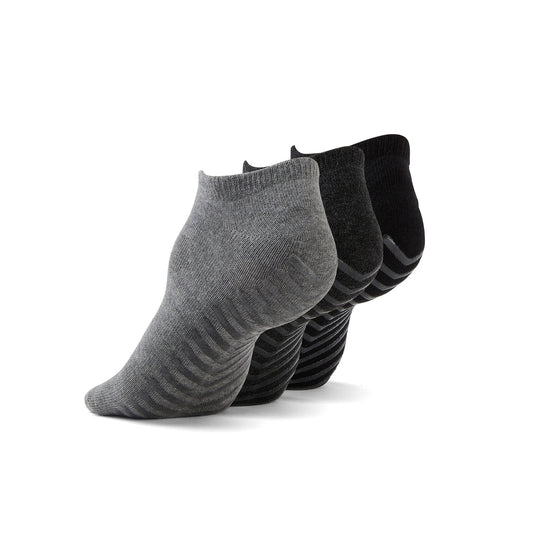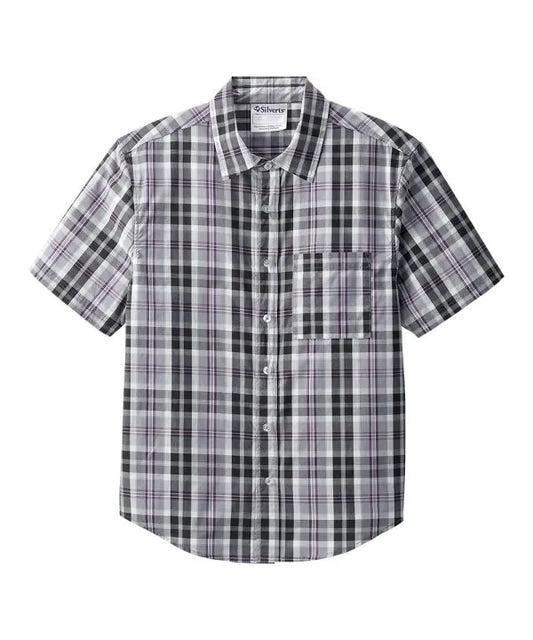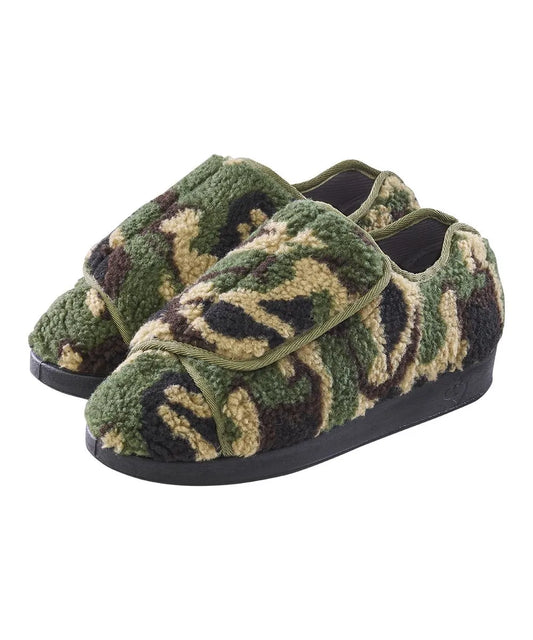Written by Eliza Gilani
Fashion has always been about self-expression, but as society grows more conscious of environmental issues, the industry is facing new challenges. Sustainable fashion has emerged as an important movement, aiming to reduce waste, limit pollution, and promote ethical production. At the same time, adaptive fashion, on the other hand, which is designed for individuals with disabilities and mobility challenges, has gained attention for improving accessibility and inclusivity. In this blog, we will explore if these two movements can even coexist. Is it truly possible to create adaptive fashion that is also sustainable? In this article, we will further delve into the realities of sustainable adaptive fashion, the challenges it faces, and whether consumers genuinely care about its impact.
Is There Such a Thing as Sustainable Fashion?
Sustainable fashion is often defined as clothing that minimizes harm to the environment while ensuring fair labour practices. It involves using eco-friendly materials, reducing waste through ethical production methods, and creating long-lasting garments that do not contribute to fast fashion’s cycle of disposability. Many brands claim sustainability, but achieving true environmental responsibility is complicated.
There are several approaches to sustainability in fashion. Some brands focus on using organic cotton, hemp, or recycled materials to reduce their carbon footprint. Others emphasize ethical labour practices, ensuring workers are paid fair wages under safe conditions. However, labour rights violations still remain rampant in many garment-producing countries, with reports estimating that only 2% of fashion workers worldwide earn a living wage. Another strategy is the shift towards a circular economy, where clothing is designed for longevity and recyclability. There is another indication of a huge gap here when it comes to the industry’s sustainability efforts as the Ellen MacArthur Foundation estimates that less than 1% of clothing material is recycled into new garments. All in all, the fashion industry as a whole still struggles with issues such as overproduction, textile waste, and excessive water consumption.
Can Fashion Be 100% Sustainable?
Another critical aspect to consider in the sustainability conversation is consumer behaviour. Fast fashion thrives on overconsumption, with trends changing rapidly and encouraging disposable fashion habits. Even if brands adopt more sustainable materials and ethical practices, true sustainability requires a shift in how consumers approach clothing, leaning towards a valuing quality over quantity mindset, repairing and reusing garments, and embracing slow fashion.
Additionally, social sustainability is just as important as environmental impact. Many garments are produced in developing countries where workers face low wages, poor working conditions, and exploitation. Ethical labour practices, fair wages, and safe working environments should be integral to sustainability efforts. Without addressing the human cost of fashion, environmental sustainability alone falls short of responsible fashion that adheres to everyone involved in creating the garment.
Innovations like biodegradable fabrics, circular fashion (where clothes are designed to be recycled or composted), and blockchain technology for transparent supply chains are steps toward a more sustainable future. However, systemic change requires collective action from brands, governments, and consumers alike. Rather than aiming for an unattainable "100% sustainable" industry, the goal should be continuous improvement, responsible production, and mindful consumption.
One cool innovation is reversible designs for reduced wardrobe waste. At June Adaptive the Women’s Reversible Front Vest with Magnetic Closure is perfect for those with limited dexterity & for that lady who likes to change her look often! With magnets that are firm enough to stay closed but easy enough to open when needed and a super soft plush on the interior side for added warmth and comfort, it's the ideal layering staple for your wardrobe.

Do People Really Care About Sustainable Fashion?
Consumer interest in sustainable fashion has grown in recent years, but actual purchasing behaviour does not always reflect that concern. Surveys show that while many people claim to care about the environment, price and convenience still drive most buying decisions. Subsequently, it follows that a 2022 study by the Business of Fashion and McKinsey & Company found that while 67% of shoppers consider sustainability, only 30% follow through, often due to cost and convenience. That’s not it, according to a First Insight and Baker Retailing Center report, 60% of Gen Z shoppers prefer to buy sustainable brands, but 54% say they will not pay a premium for them. Sustainable fashion often comes with a higher price tag due to the ethical sourcing of materials and fair wages for workers, making it less accessible to budget-conscious shoppers.
Moreover, marketing plays a significant role. Some brands engage in greenwashing, but at the same time make misleading claims about their sustainability efforts to attract eco-conscious consumers. This creates skepticism, making it difficult for buyers to differentiate between genuinely sustainable brands and those merely capitalizing on the trend. For sustainable fashion to become mainstream, it must balance affordability, transparency, and convenience without sacrificing environmental goals.
Do Gen Z Want Sustainable Fashion?
Gen Z’s relationship with sustainable fashion is nuanced and complex and different for everyone. Shaped by a mix of values, financial constraints, and the influence of social media. While they are more environmentally conscious than previous generations, their purchasing decisions often reflect a balance between ethics and practicality.
Platforms like Instagram, TikTok, and Pinterest play a pivotal role in shaping Gen Z’s fashion choices. Influencers and content creators frequently highlight the impact of fast fashion, promoting thrift shopping, upcycling, and sustainable brands. The rise of trends such as #ThriftFlip and #SustainableFashion indicates a growing desire for alternatives to traditional retail. However, the same social media platforms also fuel rapid trend cycles, pressuring young consumers to keep up with ever-changing aesthetics, often leading them back to affordable fast fashion brands.
Many sustainable brands struggle with pricing, as ethical labour practices and eco-friendly materials typically come at a higher cost. While Gen Z values sustainability, their budgets often push them toward more affordable alternatives. This paradox or dilemma highlights the need for brands to not only prioritize sustainability but also ensure accessibility. Brands that successfully appeal to Gen Z tend to offer flexible payment options, secondhand or rental models, and stylish yet affordable eco-conscious designs.
While many in this generation value eco-conscious choices, the priority for those with disabilities is often finding clothing that accommodates their needs, such as easy closures, sensory-friendly fabrics, and wheelchair-friendly designs. The sustainable fashion industry has been slow to integrate adaptive clothing, leaving many young consumers with disabilities reliant on mainstream fast fashion brands that offer affordability and convenience
As sustainability is an important factor for Gen Z, affordability and accessibility still remain critical. Brands that can bridge the gap between ethical production and competitive pricing stand a better chance of winning Gen Z’s loyalty. Additionally, the growth of secondhand shopping, rental fashion, and digital activism suggests that sustainable fashion is evolving beyond just purchasing new eco-friendly clothing—it's becoming a broader lifestyle shift that includes mindful consumption, resale, and responsible fashion choices.
What Are the Environmental Challenges of Adaptive Clothing Production?
Adaptive fashion presents unique challenges when it comes to sustainability. Because adaptive clothing often requires specialized designs such as magnetic closures, Velcro fastenings, or hidden medical access points, it can be more resource-intensive to produce. Traditional fastenings like zippers and buttons are easier to manufacture at scale, but adaptive clothing must be carefully designed for functionality and comfort.
Additionally, adaptive clothing is often made with synthetic materials to ensure durability, stretchability, and ease of maintenance. However, these fabrics can contribute to plastic waste and microplastic pollution. The balance between durability and sustainability is a key challenge in this space, as adaptive garments must be both long-lasting and environmentally friendly.
Another issue is production volume. Unlike mainstream fashion, adaptive clothing serves a niche market obviously, meaning production runs are often smaller compared to normal garments. This can drive up costs and make sustainable materials less financially viable for brands. Finding scalable solutions that support both inclusivity and sustainability remains an ongoing challenge.
Stay cozy and comfortable in June Adaptive’s Women's Cardigan with Open Back featuring convenient pockets for easy dressing. Crafted from a machine-washable acrylic knit, these cardigans feature charming pointelle stitching and decorative front buttons.

Are There Eco-Friendly Materials Used in Adaptive Fashion?
Despite the challenges, several brands are exploring eco-friendly materials in adaptive fashion. Some notable sustainable materials include:
-
Organic Cotton: Grown without harmful pesticides and requiring less water than conventional cotton, organic cotton is a popular choice for sustainable fashion.
-
Bamboo Fabric: Known for its softness and breathability, bamboo is a fast-growing, renewable resource that requires minimal water and pesticides.
-
Recycled Polyester: Made from post-consumer plastic bottles, recycled polyester reduces waste and gives existing materials a second life.
-
Tencel (Lyocell): Derived from sustainably harvested wood pulp, Tencel is biodegradable, breathable, and requires less water and energy to produce.
-
Hemp: One of the most sustainable fibres, hemp grows quickly, uses minimal water, and does not require chemical fertilizers.
These are some examples of materials that innovative brands are experimenting to create adaptive garments that meet the needs of disabled consumers while minimizing environmental impact. However, balancing sustainability with affordability and functionality is still a work in progress that is improving over time.
The Women's Cotton Underwear Tank Top-3 Pack at June Adaptive is designed for those who do not feel like wearing a bra and is made with 100% ribbed cotton. It features a soft and breathable fabric that protects delicate fragile skin. Plus, provides protection when wearing creams.

Sustainable adaptive fashion is possible, but it requires creative problem-solving, technological advancements, and a commitment from both brands and consumers. While achieving 100% sustainability in fashion is unlikely, there are many ways to reduce environmental harm while making clothing more inclusive. As awareness grows and more brands invest in sustainable solutions, the future of adaptive fashion looks promising—offering greater accessibility without compromising the health of our planet.
Find the mentioned products and more at JuneAdaptive.com. Subscribe to our newsletter at the bottom of this page for more content like this.















